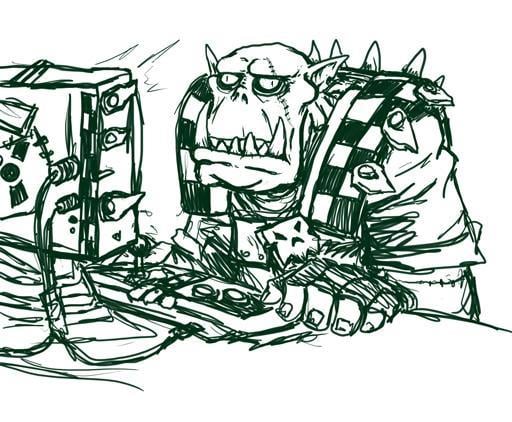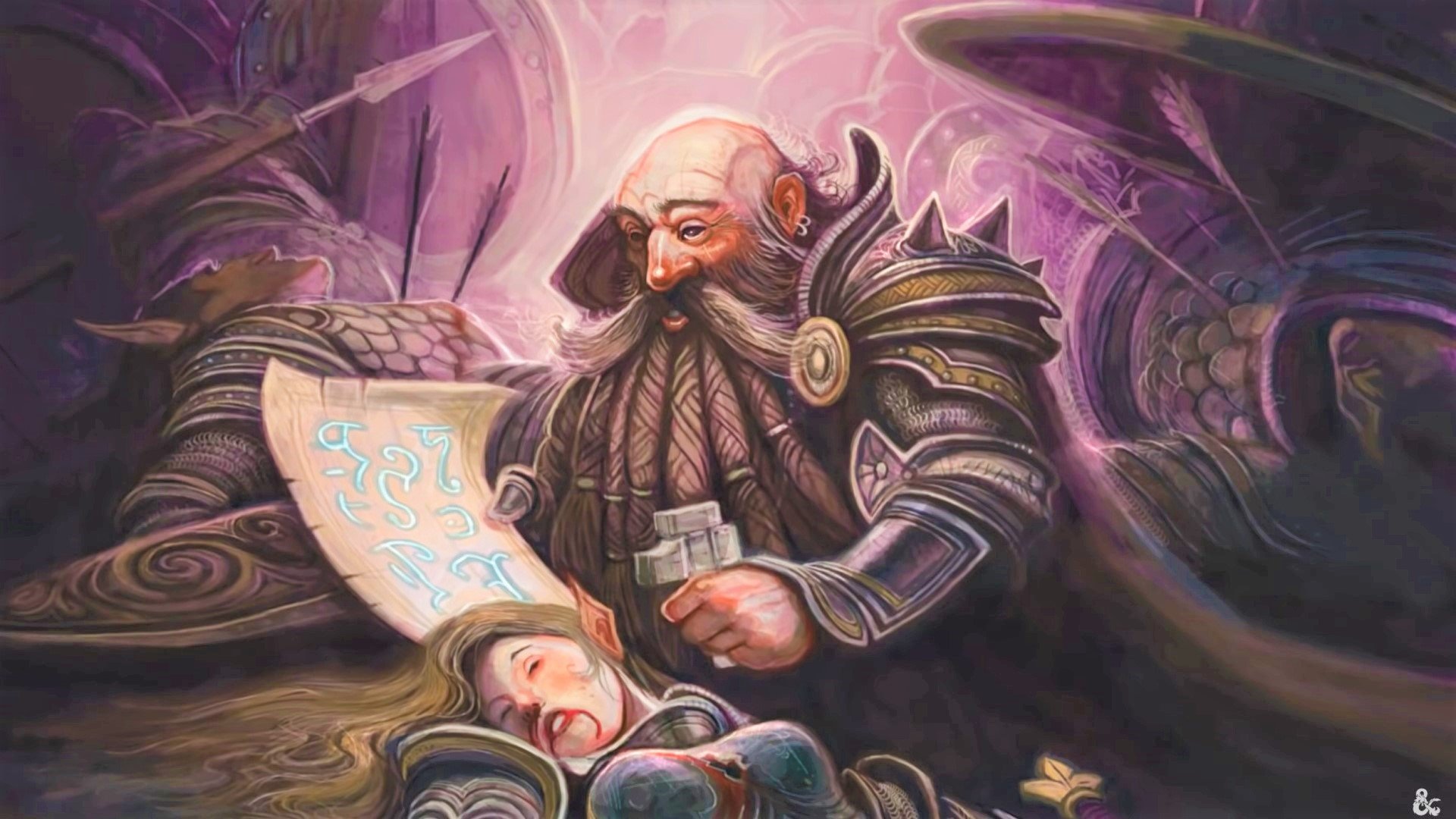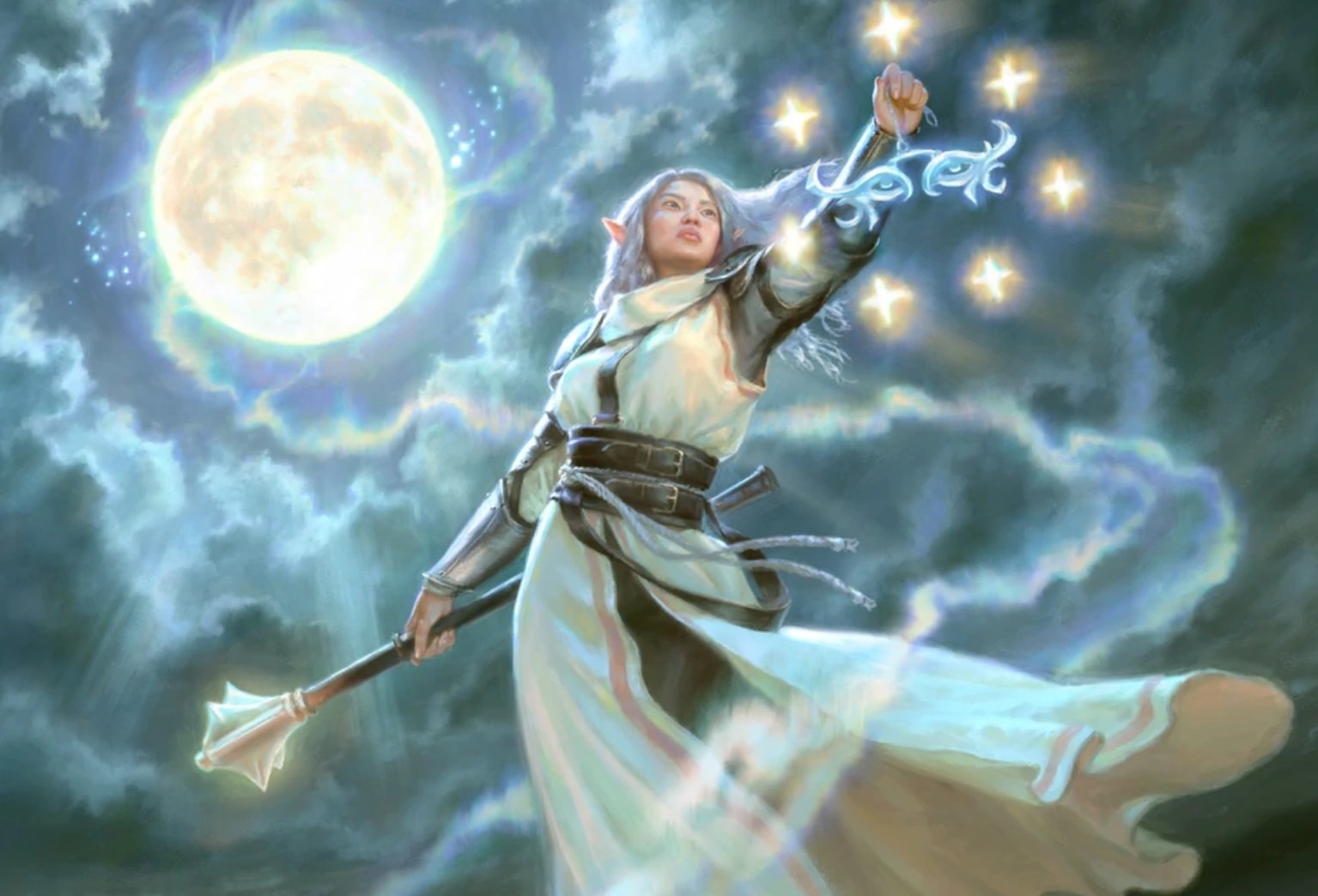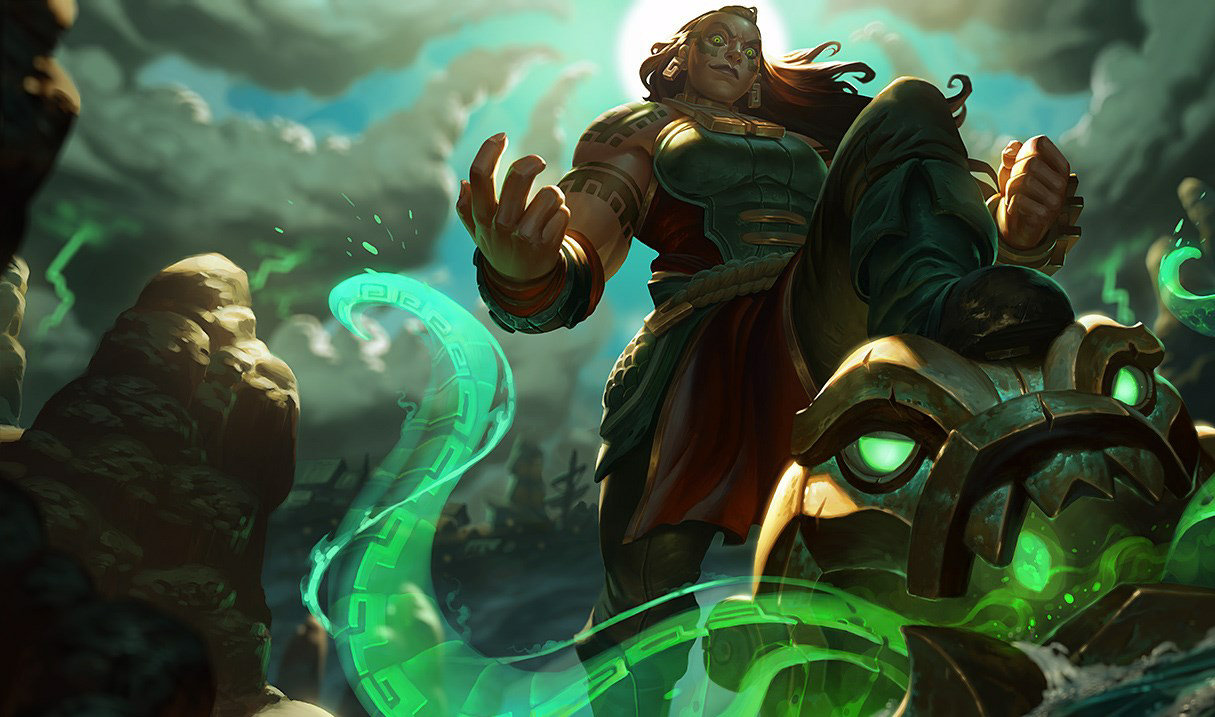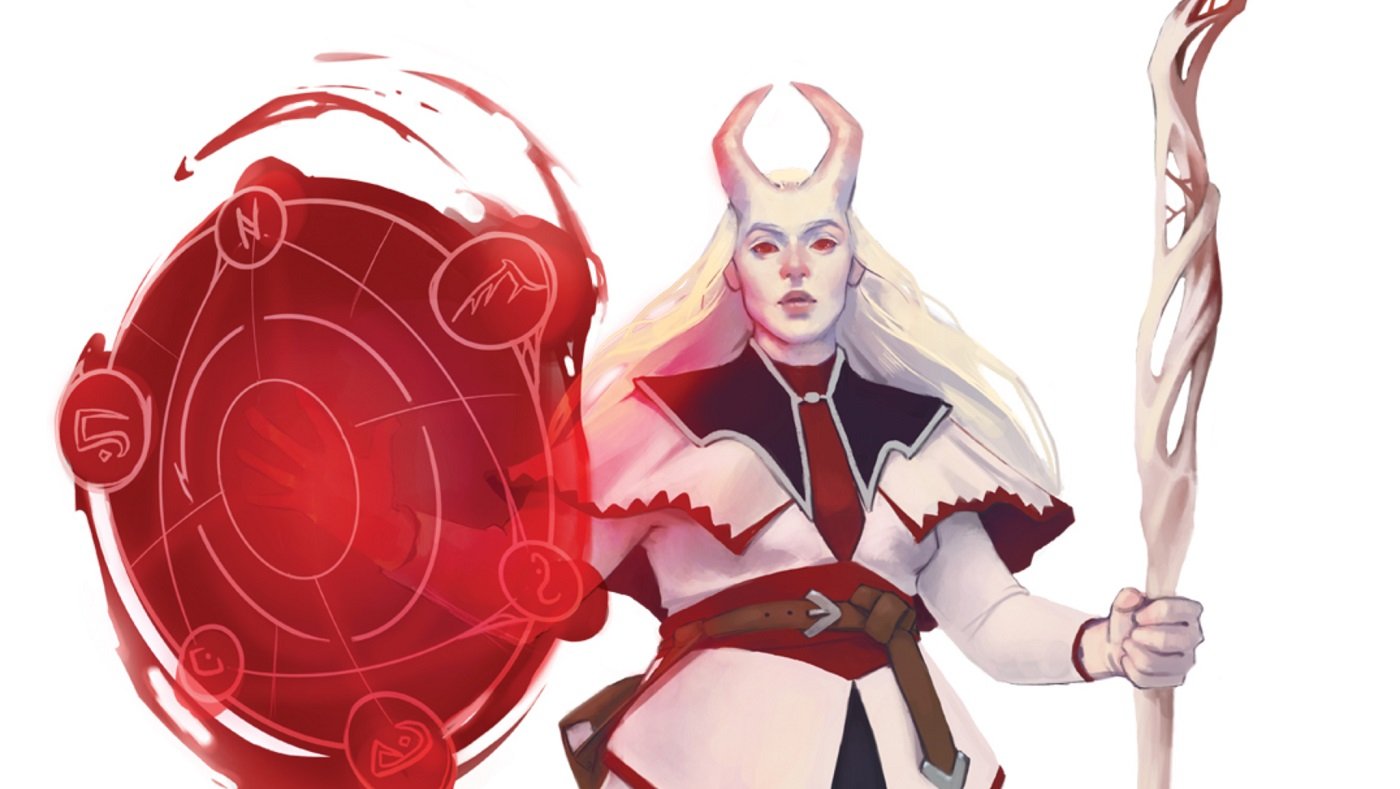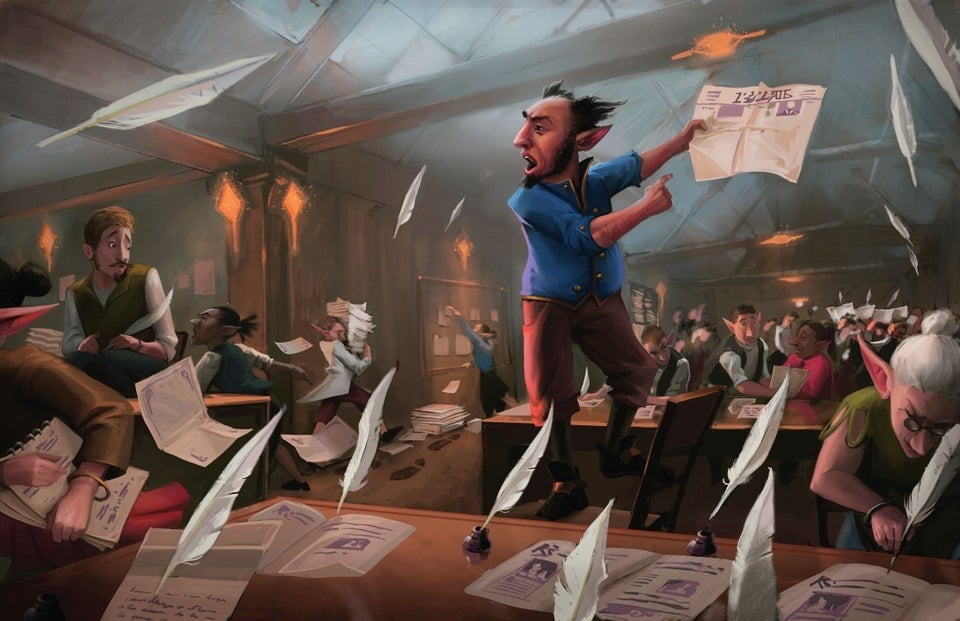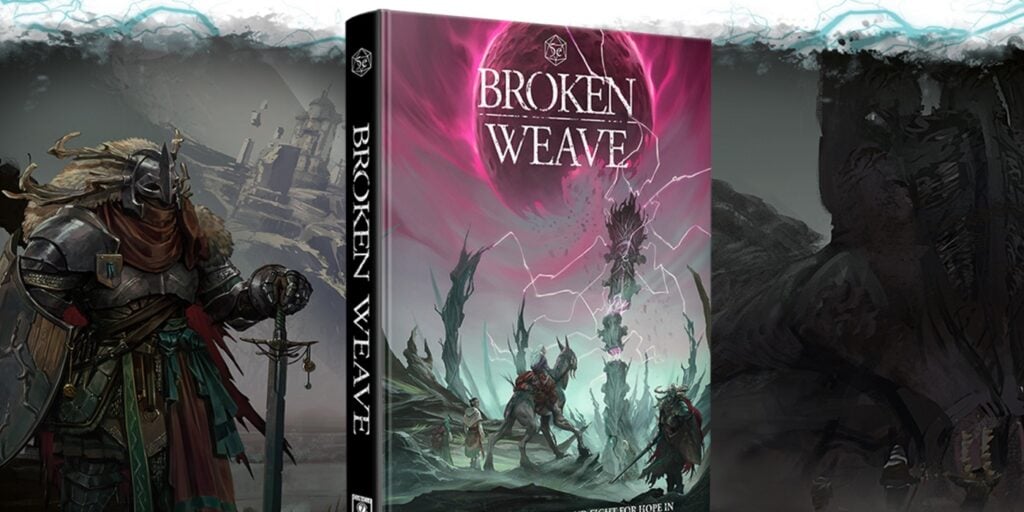D&D Beginner’s Guide: How to Homebrew Subclasses

When D&D doesn’t have the exact class you want to play, here is a guide to homebrew yourself the subclass of your dreams.
Despite being around for almost 50 years, players enjoying Dungeons & Dragons still encounter a very common problem. When rolling up their characters, players find that their class sometimes doesn’t have a subclass that fits 1-to-1 with what they want.
Jump to…
Your Options
Players can employ quite a few options. They could:
- multiclass to try and make the character concept they want. Like a Hexblade Warlock/Fighter instead of defaulting to a Bladesinger Wizard or Paladin.
- talk to the DM about what they want to play—possibly having the DM incorporate specific flavor/homebrew rules to the player’s class.
- or go online and find a homebrew subclass made by someone else. After all, originality is dead. Usually, something a homebrewer wants to play is something someone ELSE already wanted to play in the past.
But even after going through all the previous options, players still might be unable to find or make their class concept feasible. Once all other considerations are gone, it’s time to pull out the drawing board and go home-brewing.
Side Effects of Homebrewing Might Include Headaches, Nausea, and Angry Dungeon Masters
This is an arbitrary disclaimer section for anyone new to D&D. Before getting into homebrewing a subclass, players should first research a wide variety of the already printed WotC archetypes. Making a subclass is far more complicated than homebrewing a simple spell or magic item and should naturally be treated as such.
Making a subclass affects the balance of a party tremendously. There is a reason why the Rogue’s Inquisitive and Mastermind archetypes are separated into two different subclasses. One is better at investigation and roleplay, while the other is a purely supportive party buffer. They both have their roles, and their unique abilities help differentiate them.
A homebrew archetype should be more than just a combination of previous subclasses. Concepts like that can often be accomplished by either multiclassing or taking a feat. A good example is a Hexblade Warlock with three levels into Battlemaster Fighter or the Martial Adept feat.
What I’m saying is- if a homebrew archetype for a class boils down to X with a little bit of Y? Reconsider if it should be made into a homebrew in the first place and save someone the headache of trying to balance it.
Cooking by the Book (The Player’s Handbook, That is)
The most obvious advice a seasoned homebrew TTRPG player can give, one nerd to another, is to do the necessary research.
Understanding what archetype features are is a crucial step to making a subclass. Don’t just throw in random abilities every couple of levels. When making a subclass, every class has an order and purpose by which their subclass grants them new abilities.
The Fighter, which gets its subclass at level 3, receives new archetype features at levels 3, 7, 10, and 15.
Meanwhile, the Cleric, which gets its subclass at level 1, receives new archetype features at levels 1, 2, 6, 8, and 17. I am referencing 5e Cleric here because I can’t afford the new PhB at the moment. Sue me.
Building classes this way happens for a reason. Clerics have a massive gap between their level 8 and level 17 abilities because of their early-level strength and versatility. A level 10 Cleric is one of the scariest things in D&D, bar none. I fear the day someone makes a subclass that gives a Cleric archetype a sixth divine domain feature.
To summarize, creating a subclass according to these feature guidelines prevents giving a character an excessive number of abilities. This basic formula is to prevent early on power imbalance. This leads to my next point.
Climbing the Power Staircase
DO NOT GIVE A CLASS THEIR PEAK POWER POTENTIAL WHEN THEY GET THEIR FIRST ARCHETYPE FEATURE.
A common mistake I see a lot of homebrew subclasses make is that all of the creativity is put into the class’ first feature, and then the rest is left out to dry.
When making a subclass, I find that there are two main ideologies a rookie homebrewer can follow:
Building Up the Basics
My favorite Barbarian subclass is a perfect example of this. “Path of the Depths” Barbarian has a unique feature that allows it to summon a tendril and grapple a target at range. As the class levels up, it gains features that improve this grapple. For example, at level 10, the Barbarian can summon two tendrils, making two grapple checks per turn.
This is an example of giving a character a primary feature early on and building off of it the higher the character’s level becomes.
Another more well-known example of this is the Battlemaster Fighter. At level 3, the Fighter learns three combat maneuvers and has access to four d8 superiority dice. As they level up, the Fighter can learn up to nine combat maneuvers, have a maximum of six superiority dice instead of four, and turn their superiority dice from d8s into d12s by level 18.
Homebrewing a subclass this way is how I’d recommend beginners start. It’s easier to balance one prominent ability with minor buffs than five separate abilities that don’t build off each other.
Thematic Relevance
A subclass can also be homebrewed in a way where the abilities don’t improve upon each other. Instead, the archetype features provide the class with separate abilities that build up thematic relevance when looked at as a whole.
I know. Big words are scary. Just stay with me here.
Spellcaster classes more commonly feature class archetypes designed in this format. These archetypes have features that all stem from a theme or concept that sometimes don’t scale with level but become more prominent with each feature gained.
It’s like learning a rinky-dink healing spell at level one and then learning a massive healing wave at level 11. They contribute to the overall theme of “healing” but are still considered separate abilities.
An excellent example of this is the Sorcerer’s archetype: Clockwork Soul. Each archetype feature that the class gains is a new ability that does not build on the feature before it. But collectively, they combine to contribute to the overall theme of a spellcaster that “the cosmic force of order has suffused” with magic.
Another example, this time from a more martial class, is practically every Paladin archetype. Don’t believe me? Take a look. Every Paladin archetype is themed around the “oath” that the Paladin takes. Each oath feature the class gains is a new ability that either builds off the Paladin’s core abilities or is entirely original and builds off the oath’s themes that the Paladin has pledged their life to serve.
Homebrewing a subclass this way is far more complex than the previous method, requiring much more creativity and balancing knowledge to pull off well. However, when pulled off correctly, this method of archetype homebrewing can make a subclass that comes together to create an experience that can be gratifying for roleplay, character design, and combat.
Lvl 18 Paragraph Feature: Closing Thoughts
Both of these aforementioned methods of homebrewing are valid for ability creation. Of course, this doesn’t mean that they are the only ways to create homebrew subclasses. But when starting out, following rubrics like these can make it easier to make subclasses, especially for beginners.
By straying from the basics, homebrew rookies tend to, for lack of better words, word vomit imbalance into their first few subclasses. They add whatever they think is cool without much thought for what the abilities represent or do in terms of in-game context.
Just scroll through DnD Beyond’s Homebrew creations and sort by lowest rated. It’s easy to see that many of the lowest-rated homebrews include abilities or ideas come from great personal inspiration.
As a fun drinking game, every time a homebrew has an apparent anime reference written into it, an impossible-to-miss typo, or an ability that doesn’t follow the rules of D&D at all—take a shot.
Homebrew is an excellent way for a TTRPG fan to write their dream character concepts and turn their dreams into reality. And there’s no shame in someone making a subclass themed around their favorite anime character or Marvel superhero. However, it’s recommended that beginners start out homebrewing small things first, like magic items, before homebrewing big things, like subclasses or monster stat blocks.
Trust me, because I have made homebrew subclasses for my players before. Homebrew that, to this day, I am still incredibly proud of. One day, a player I made a subclass for told me they hated it because it wasn’t what they wanted. Was this upsetting? Yes. But it became INFURIATING when the player revealed they wanted to play A WAY OF THE OPEN PALM MONK JUST WITH MORE BUFFS.
Granted, the player was new and essentially had a Mary Sue moment. But please, new players, trust a veteran and play some of the already-released content before making something from scratch. Trust me. You’ll be better off by doing so.

